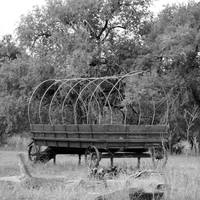Papers by Sally Y Shelton
Page 1. PARASUCHID REPTILES FROM THE TRIASSIC DOCKUM GROUP OF WEST TEXAS by SALLY YVONNE SHELTON,... more Page 1. PARASUCHID REPTILES FROM THE TRIASSIC DOCKUM GROUP OF WEST TEXAS by SALLY YVONNE SHELTON, BS A THESIS IN MUSEUM SCIENCE Submitted to the Graduate Faculty of Texas Tech University ...
Special publication, 2000
PALEONTOLOGICAL collecting, transport of fossil materials, and the ownership of paleontology coll... more PALEONTOLOGICAL collecting, transport of fossil materials, and the ownership of paleontology collections are governed and affected by a wide range of laws and regulations, from land law to bequests. Compliance with all applicable laws can be confusing, especially when a collector has to negotiate Federal, state, local, tribal and international requirements.Unlike archaeology, paleontology does not have a body of laws specific to fossil protection. Most legal problems in paleontology arise from land access and permission to collect on public lands, theft and trespass concerns, public trust violations, land title and rights, and related issues. In the United States, there are no definitive overarching statutes governing fossil resources per se as separate from other land resources.

Paleontology is a highly effective gateway to science education, making it ideal for outreach. Wi... more Paleontology is a highly effective gateway to science education, making it ideal for outreach. With this in mind, the authors, in collaboration with the South Dakota School of Mines and Technology Paleontology Club, developed teaching kits designed to educate middle-school students about dinosaurs and paleontology. The self-contained kits, designed to be mobile and easily implemented, in clude all materials necessary for delivering a lesson illustrating which dinosaurs lived during particular geologic time periods. Scale models of exemplar dinosaur from all Mesozoic time periods are accompanied by fact sheets. The fact sheets, presented in “comic book” style, present aspects of each Mesozoic period, including age, paleogeography, local geology, flora and fauna. Dinosaurs from each period are given a general description and students are prompted to identify example taxa from each time period. The kits were implemented with 124 eighth-grade students from South Mid dle School in Rapid ...
Geological Society of America eBooks, 2007
... Footnotes. Accepted 13 December 2006. Geological Society of America. Previous Section. Refere... more ... Footnotes. Accepted 13 December 2006. Geological Society of America. Previous Section. References. ↵ Becker, MA, Chamberlain, JA, and Terry, DO, Jr., 2004, Chondrichthyans from the Fairpoint Member of the ... Hoganson, JW, and Murphy, EC, 2002, Marine Breien Member ...

—Reported temperatures for the extermination and control of 46 museum insect pests are tabulated ... more —Reported temperatures for the extermination and control of 46 museum insect pests are tabulated and graphed. Temperature and time of exposure found in publications recommending thermal control methods for museum use are tabulated for comparison to the mortality data from entomological literature. Miscellaneous control temperatures are also tabulated, providing information on chill-coma, feeding and developmental limits. A lethal boundary model is proposed as a provisional guide to thermal extermination of insect pests. The use of thermal insect control techniques in museums and archives has been fostered by increased restrictions on, and costs of, fumigant and pesticide use. Thermal control methods are used when there is reticence to expose cultural property or museum personnel to proven or potentially deleterious chemical agents. Adoption of thermal control techniques to replace pesticides is hampered by concerns that thermal techniques will fail to control insects. These concerns are due to the lack of available data on insect susceptibility to heat and cold, an awareness of some insects' capability to survive temperature extremes, a wariness of generalizations in literature, the need for justification of capital expenditure on new equipment, and suspected or known effects on artifacts and specimens. In most of the recently published thermal control methods for museums, entomological literature is sparingly cited. Many of the earlier published recommendations were derived from experience with only a few species. Recommendations for controlling particular insect species have also been generalized in subsequent publications, so there is a danger of failure to control a species which was not included in the original recommendation. This paper was written to address concerns rooted in the lack of comprehensive information on the thermal mortality limits of museum pest insects. Thermal mortality data are presented as a provisional guide for users of temperature extremes to control insects. The data are also provided for potential users of thermal insect control who require evidence of efficacy. Control methods from conservation and museology literature are reviewed and compared to an extensive source of entomological literature on temperature sensitivity of museum pest insects. The data on thermal limits to the insects are organized in the Appendix to this paper and provided as a basis for further study or individual need. This paper is restricted to a discussion of museum pest insects and excludes theorized and described effects on materials.

—Problems with acidity were being encountered in a research fish parasitology collection preserve... more —Problems with acidity were being encountered in a research fish parasitology collection preserved in various concentrations of formaldehyde solutions. Initial conservation work failed to correct this problem despite using some form of buffering control for the acidity in the replacement formaldehyde solutions. As a result work was carried out to look into more effective means of buffering acidity in this material by choosing a range of suitable buffering agents, monitoring the pH levels over a period of time and comparing their ability to control acidity through a series of acid titrations. The buffers chosen were all sodium based and their action was compared when used with 4% formaldehyde solutions, made up in both saline and deionised water. The final results suggested that using 0.05M sodium-fi-glycerophosphate in solutions made up in deionised water was the most effective means of buffering the fish parasitology material. Conservation work has been carried at the National Museum and Galleries of Wales, Cardiff (NMW) on a fish parasitology research collection. Much of the material was collected during research cruises in 1990 and 1991 and consists largely of elasmobranch fish intestines fixed and preserved in 10% formaldehyde. Since collection, the specimens had remained in the formaldehyde originally used as both the fixative and the preservative. Checks revealed an acidic pH, often less than 4, with a substantial yellowing of the solution in most of the cases. This suggested possible problems from lipid leaching or protein dissociation were developing. It was decided to keep the material preserved in formaldehyde rather than transfer to an alcohol based preservative. This decision was based on the researchers using this material who in numerous previous investigations of parasites in the elasmobranch intestine had found formaldehyde a good preservative for examination of specimens by both light and electron microscopes (H.H. Williams, personal communication). Thus, it was decided to replace the existing formaldehyde preservative with a buffered solution of 4% (0.04M) formaldehyde. Formaldehyde made up in saline solution with the addition of 5% (0.05M) sodium acetate was initially used, utilising the natural buffering effect of seawater supported by the addition of a buffering agent. The aim was to achieve a pH of 6 7 which is considered advantageous for the long-term preservation of proteins (Steedman, 1976) as it is close to the isoelectric point of most proteins. It is at this point that proteins are at their least soluble. However, subsequent monitoring found the pH levels to be unsatisfactory. Within a few months pH levels were close to the previous storage values and it was decided to investigate the problem in more detail. METHODS AND MATERIALS A selection of buffering agents were chosen from those recommended by Pearse, 1968; Mahoney, 1973; Steedman, 1976; and Harris, 1990, all of which were sodium based. A number of elasmobranch stomachs and intestines were removed from their original formaldehyde preservative and briefly rinsed Collection Forum, 13(1), 1997, pp. 1-10 2 COLLECTION FORUM Vol. 13(1) Table 1. List of buffering solutions used in the investigation.
Annals of Improbable Research, 2004

Geological observations of the Corps of Discovery have received less subsequent attention than ot... more Geological observations of the Corps of Discovery have received less subsequent attention than other aspects of natural history. While this may seem surprising in view of President Jefferson’s interest in agriculture and mineral resources, conventional interpretation has generally held that the expedition was so overwhelmed by the new discoveries and observations of plants and animals that geologic information was given less attention. Perhaps a more accurate view is that geologic observations are more subtle within the accounts. While subsequent analyses have been more focused on botany and zoology, it is also true that geological observations of great interest were recorded early in the expedition. Fortuitously, the geology of the route along the Missouri River afforded an astonishingly good introduction to a general section of Upper Cretaceous and Early Tertiary strata in sequence lower to upper, a fact now recognized, but obscured from the expedition itself. Fossil discoveries a...
The Paleontological Society Special Publications
PALEONTOLOGICAL collecting, transport of fossil materials, and the ownership of paleontology coll... more PALEONTOLOGICAL collecting, transport of fossil materials, and the ownership of paleontology collections are governed and affected by a wide range of laws and regulations, from land law to bequests. Compliance with all applicable laws can be confusing, especially when a collector has to negotiate Federal, state, local, tribal and international requirements.Unlike archaeology, paleontology does not have a body of laws specific to fossil protection. Most legal problems in paleontology arise from land access and permission to collect on public lands, theft and trespass concerns, public trust violations, land title and rights, and related issues. In the United States, there are no definitive overarching statutes governing fossil resources per se as separate from other land resources.

The delicate nature of the specimens at Florissant Fossil Beds National Monument, Colorado requir... more The delicate nature of the specimens at Florissant Fossil Beds National Monument, Colorado requires a constant monitoring of the collections. The overall stability of the fossils is greatly impacted by the abrupt change in humidity that may occur after the paper shale has been excavated, as well as the varying levels of humidity in the collections and display areas. Creating methods to effectively “acclimate” the shale’s transition from the ground to the lab, and finding and maintaining the ideal humidity range for our collections room is integral to the collections management at Florissant Fossil Beds. For these experiments, a controlled environment chamber was used, employing both humidification and dehumidification systems. The humidity is systematically lowered to slowly dehydrate
damp shale and safely lower it to the ambient relative humidity (RH) in the lab and collections areas. Tests have also been run to monitor damages the shale undergoes when it reaches a certain level of humidity. Below 25% RH, deformation occurs in the form of flaking and delamination. Initial data suggest that the ideal range to keep the collections area is between 30-35%. These tests will ultimately become the basis for a protocol that will outline how the paper shale will be handled once excavated, and how the collections area should be maintained.

This report serves to recount major contributions in the field of paleontology, throughout the li... more This report serves to recount major contributions in the field of paleontology, throughout the lifetime of the South Dakota Academy of Science. The Proceedings of the South Dakota Academy of Science has provided an invaluable venue for the descriptions and establishments of type specimens, poorly known bio-chronologic faunas, and research that covers many other aspects of paleontology. In several cases, the Proceedings provides the only recorded or citable information on a fossil site, taxonomic component, stratigraphic occurrence, or other information not provided elsewhere. We chronicle some of the most notable paleontological contributions through the South Dakota Academy of Science, and the major contributors who fully utilized this venue to make a wide variety of information available. There is great value in providing a venue for peer-reviewed research in a more academically relaxed atmosphere, which can be better utilized for citation. Some research may not be deemed significant enough for journals with more perceived prestige, and this hinders the release of potentially valuable information. Quality of research appears to be erroneously gauged by a journal's impact factor or notoriety rather than the content provided by the contributor. These accounts should not only serve to chronicle contributions, but encourage researchers to service this venue for continued academic productivity and further enrich the academic value of the organization.
Special Paper 427: The Geology and Paleontology of the Late Cretaceous Marine Deposits of the Dakotas, 2007
... Footnotes. Accepted 13 December 2006. Geological Society of America. Previous Section. Refere... more ... Footnotes. Accepted 13 December 2006. Geological Society of America. Previous Section. References. ↵ Becker, MA, Chamberlain, JA, and Terry, DO, Jr., 2004, Chondrichthyans from the Fairpoint Member of the ... Hoganson, JW, and Murphy, EC, 2002, Marine Breien Member ...
Page 1. PARASUCHID REPTILES FROM THE TRIASSIC DOCKUM GROUP OF WEST TEXAS by SALLY YVONNE SHELTON,... more Page 1. PARASUCHID REPTILES FROM THE TRIASSIC DOCKUM GROUP OF WEST TEXAS by SALLY YVONNE SHELTON, BS A THESIS IN MUSEUM SCIENCE Submitted to the Graduate Faculty of Texas Tech University ...











Uploads
Papers by Sally Y Shelton
damp shale and safely lower it to the ambient relative humidity (RH) in the lab and collections areas. Tests have also been run to monitor damages the shale undergoes when it reaches a certain level of humidity. Below 25% RH, deformation occurs in the form of flaking and delamination. Initial data suggest that the ideal range to keep the collections area is between 30-35%. These tests will ultimately become the basis for a protocol that will outline how the paper shale will be handled once excavated, and how the collections area should be maintained.
damp shale and safely lower it to the ambient relative humidity (RH) in the lab and collections areas. Tests have also been run to monitor damages the shale undergoes when it reaches a certain level of humidity. Below 25% RH, deformation occurs in the form of flaking and delamination. Initial data suggest that the ideal range to keep the collections area is between 30-35%. These tests will ultimately become the basis for a protocol that will outline how the paper shale will be handled once excavated, and how the collections area should be maintained.